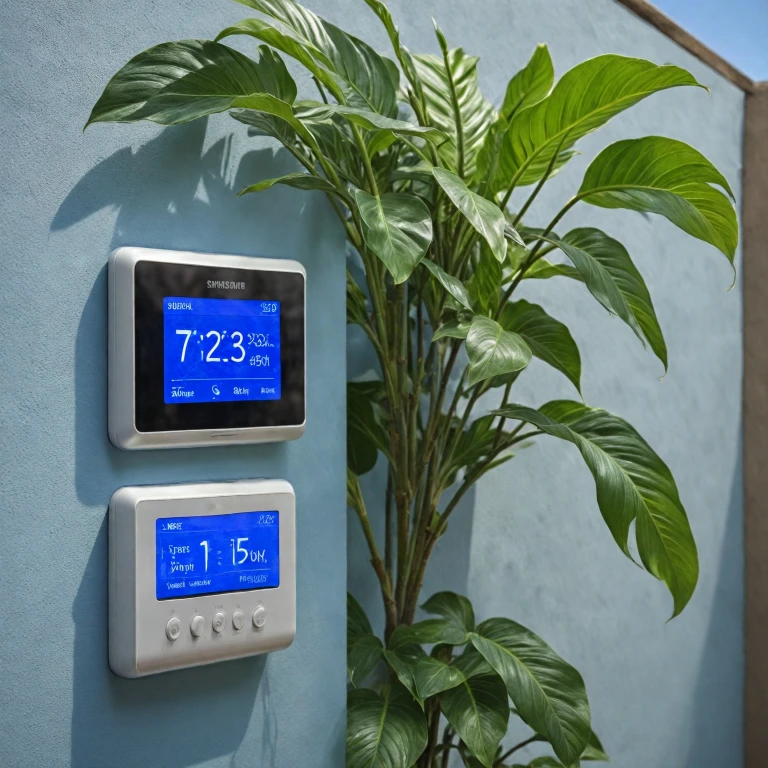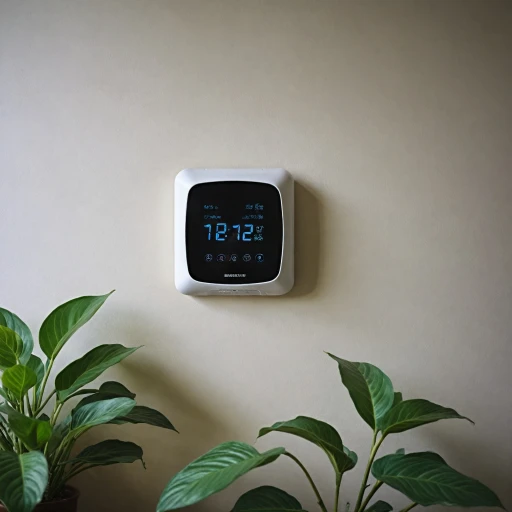Understanding the Role of Outdoor Temperature Sensors
Understanding the Importance of Temperature and Humidity Sensors
Smart thermostats have transformed how we control indoor climates, providing precision and efficiency that traditional models can’t match. They utilize various temperature sensors to gauge the current indoor air temperature, including wireless temperature options for seamless connectivity. However, to achieve optimal climate control, integrating outdoor temperature sensors is crucial. Incorporating sensors like the Acurite outdoor temperature sensor not only enhances accuracy but also allows these products to adjust settings based on outside conditions. This integration is particularly beneficial for managing temperature and humidity levels indoors, as fluctuations in outdoor weather can affect your home's comfort and energy efficiency. Wireless weather stations, equipped with temperature and humidity sensors, collect valuable data such as relative humidity and air temperatures, feeding this back to the smart thermostat. This data-driven approach allows the thermostat to make informed decisions about when to heat or cool your home, thus saving energy and reducing costs. Additionally, many options come with an easy installation process, catering to a range of compatibility needs and budgets. The price of these sensors can vary based on features and capabilities. However, considering their impact on energy efficiency and comfort, many consumers find them a worthwhile investment. They are often sold as part of a package or as standalone products with select options, offering flexibility based on individual needs. Understanding temperature probes in smart thermostats can provide deeper insights into how these devices operate and can be enhanced further. For more on this topic, refer to in-depth analyses from experts, which provide a comprehensive guide to temperature probes here. Whether you’re considering a standalone sensor or a full weather station setup, integrating these tools into your climate control strategy is a proactive step towards smarter home management.Benefits of Integrating Outdoor Temperature Sensors with Smart Thermostats
Enhancing Climate Adaptation with Smart Integration
Integrating outdoor temperature sensors with smart thermostats offers many significant advantages. These benefits are primarily rooted in enhanced climate control, energy efficiency, and user comfort.
- Better Energy Efficiency: When a smart thermostat receives real-time data from outdoor temperature sensors, it can adjust the indoor environment more intelligently. By taking into account the outdoor air temperature and humidity levels, your heating, ventilation, and air conditioning (HVAC) system can operate more efficiently, leading to energy savings and reduced costs.
- Improved User Comfort: Direct data input from outdoor sensors allows the systems to maintain a more consistent and comfortable indoor climate. For instance, when outdoor temperatures fluctuate, the thermostat can automatically adjust its settings, ensuring that the indoor environment remains stable and comfortable without manual intervention.
- Smart Decision Making: With integrated outdoor data, the thermostat can learn and predict energy needs based on the weather. For example, if it's sunny outside, the thermostat might reduce heating since solar gain helps increase indoor temperature naturally.
The combination of outdoor temperature sensors can transform your smart thermostat into a more holistic climate management tool. Importantly, products like those sold by Acurite, a known brand in wireless weather and temperature sensors, offer flexible select options and easy installation. These products typically feature reliable wireless communication, effectively delivering accurate temperature data to the connected smart thermostat, thus enhancing decision-making capabilities.
Adapting to the variability of outdoor conditions is crucial for maintaining indoor comfort and efficiency, making the integration of these sensors a valuable investment. For those considering such enhancements, exploring the latest products on the market, like sensor weather stations with a year warranty or indoor outdoor sensor ranges, presents promising options that can improve the overall functionality of smart thermostats.
How Outdoor Temperature Sensors Improve Climate Control
Optimizing Climate Control with Outdoor Data
Integrating outdoor temperature sensors with smart thermostats can significantly enhance climate control within your home. These sensors provide real-time data on external weather conditions, allowing your thermostat to make informed adjustments to indoor air temperature and humidity. By understanding both indoor and outdoor environments, smart thermostats can efficiently manage heating and cooling systems, ensuring optimal comfort.
Outdoor temperature sensors work by collecting data on external air temperature and relative humidity. This information is then transmitted wirelessly to the smart thermostat, which uses it to adjust the heating or cooling settings accordingly. For example, if the outdoor temperature drops suddenly, the thermostat can preemptively increase indoor heating to maintain a comfortable environment.
Products like Acurite's wireless weather stations offer a range of sensors that can be easily installed and integrated with smart thermostats. These sensors not only measure temperature but also track humidity, providing a comprehensive view of the outdoor climate. With features such as easy installation and a year warranty, these products are designed to enhance the functionality of your existing thermostat system.
Moreover, the ability to access real-time weather data allows for more precise climate control. This can lead to energy savings, as the thermostat only activates heating or cooling systems when necessary, based on accurate outdoor conditions. As a result, users can enjoy a more consistent indoor environment without the need for constant manual adjustments.
While the integration of outdoor sensors can seem daunting, many products on the market offer straightforward setup processes. It's important to consider compatibility with your existing thermostat system to ensure seamless operation. By selecting the right options, homeowners can enhance their climate control capabilities and enjoy the benefits of advanced smart home technology.
Installation and Compatibility Considerations
Installation and Compatibility Factors for Smart Thermostat Probes
When integrating outdoor temperature sensors with smart thermostats, understanding the specific installation requirements and compatibility matters significantly. These components ensure that the system effectively gathers and processes the necessary climate data. To achieve optimal integration, consider the following key aspects:
- Compatibility Checks: Before purchasing products like the Acurite wireless temperature sensor or similar devices, confirm that they are compatible with your specific smart thermostat model. Check the product specifications and the list of compatible devices provided by the manufacturer. This ensures seamless communication between the indoor and outdoor sensors and the thermostat.
- Installation Guidelines: Most manufacturers design these sensors for easy installation. Wireless options reduce the hassle of complex setups. However, it's important to place the sensor outdoor in a location that accurately reflects the area's typical air temperature. Ensure the device is not exposed to direct sunlight or adverse weather conditions without proper shielding.
- Proximity Considerations: For accurate weather data and seamless sensor communication, maintain an appropriate range between the smart thermostat and the outdoor sensor. Signal strength diminishes with distance, so keeping these components within effective communication range is essential.
- Humidity and Temperature Readings: Choosing a dual-function device that measures both air temperature and relative humidity can enhance climate control accuracy. These readings allow the system to adjust indoor climate more precisely, contributing to energy efficiency and comfort.
- Maintenance and Year Warranty: Regular maintenance ensures reliable sensor operation. Check the sensor weather for any damage or debris. Opt for products with a solid year warranty to protect your investment and ensure reliable long-term function.
Integrating outdoor temperature sensors effectively expands the capabilities of smart thermostats. With the right product selection and strategic installation, homeowners can unlock advanced climate control features that respond dynamically to both indoor and outdoor conditions.
Challenges and Solutions in Using Outdoor Temperature Sensors
Overcoming Obstacles in Sensor Integration
Integrating outdoor temperature sensors with smart thermostats can present some challenges, but understanding these issues can help in finding effective solutions. One of the primary concerns is compatibility. Not all smart thermostat products are designed to work seamlessly with every type of sensor, particularly those that monitor outdoor air temperature and humidity. Ensuring compatibility requires checking the specifications and compatibility list provided by the manufacturer.
Addressing Wireless Connectivity Issues
Wireless connectivity is another potential hurdle. Many sensors, like those from Acurite, rely on a stable wireless connection to transmit data. However, factors such as distance and interference from other wireless devices can affect performance. To mitigate this, it's crucial to ensure that the sensor is within the effective range of the thermostat's wireless network. Additionally, selecting options that offer robust wireless weather station capabilities can enhance reliability.
Managing Environmental Factors
Environmental factors, such as extreme weather conditions, can also impact sensor accuracy. For instance, humidity sensors may struggle in high humidity environments, leading to inaccurate readings. To address this, consider products with a year warranty that guarantee performance in various weather conditions. Moreover, proper installation, including strategic placement of the sensor, can help avoid issues caused by direct sunlight or precipitation.
Cost Considerations
Price can be a concern for consumers looking to integrate outdoor sensors with their smart thermostats. While the list price of high-quality sensors might be steep, the long-term benefits in energy efficiency and comfort often justify the investment. Additionally, some products offer easy installation features, reducing the need for professional installation and further lowering costs.
Future-Proofing Your System
Lastly, as smart thermostat technology continues to evolve, it's essential to choose sensors that can adapt to future advancements. Opt for products that offer firmware updates or modular components, ensuring your system remains up-to-date with the latest innovations in temperature and humidity monitoring.





